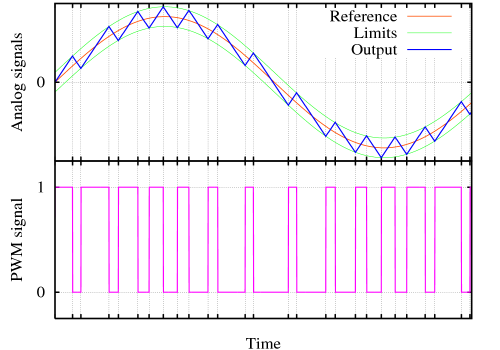Class-D Modulation Schemes
Monday, November 17th, 2008
For an excellent introduction to the theory behind class-D amplifiers, please refer to “The Class-D Amplifier” by Marshall Leach. Dr. Leach is the designer of The Leach Amp, a highly regarded low-TIM amplifier.
Standard PWM modulation involves the use of the input signal, a reference triangle wave, and a comparator. If the PWM output itself is used to generate the triangle wave via an integrator, and a little hysteresis is added to provide an effective delay to help set the switching frequency, then a self-oscillating hysteresis modulator results.
Rather than using the delay resulting from hysteresis to help set the switching frequency, phase shift may be used to provide the delay around the loop. A particularly elegant way of doing this is to use the phase shift from the output filter itself – the result is a self-oscillating phase shift modulator. Not only is this simpler, as it makes use of components that are already required, but it has the benefit of reducing errors resulting from the output filter itself (e.g. frequency response anomalies).
There are many more approaches to class-D modulation, all with their own set of advantages, disadvantages, and oddities, but this is a good sampling for starters.